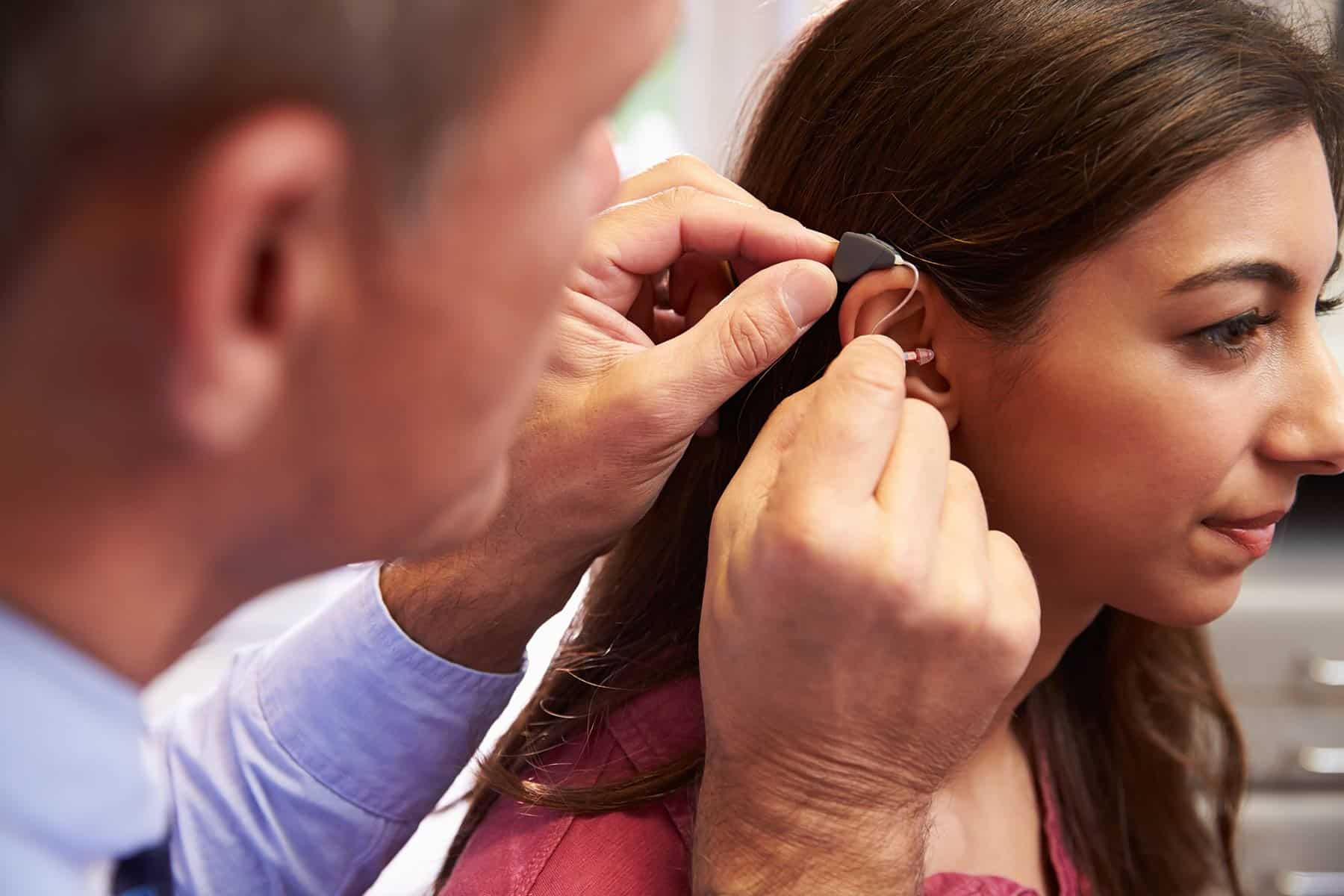MED-EL
Published May 20, 2015 | Last Update Mar 15, 2023
What’s the Point of Bimodal Hearing?

At MED-EL, we’ve always supported hearing in both ears. For someone with a severe-to-profound bilateral hearing loss, a cochlear implant may be the best option. But many people are unable to, or choose not to, receive two cochlear implants. So, for someone who has only one cochlear implant—what should be done with the second ear?
Choosing Unilateral or Bilateral Implantation?
There are five main reasons why someone today would receive a single cochlear implant, according to a 2015 study of 164 children who received their first cochlear implant in the UK between January 2009 and February 2014. Of these 164, 67% received bilateral implants and the remaining 33% received a unilateral implant.1 Why did they receive only one implant? The study found these reasons:
- Complex medical and social situations
- Useable low-frequency hearing (they chose to use a hearing aid in the other ear)
- No hearing loss in the other ear (for example, individuals with Single-Sided Deafness)
- Monitoring the progress of the first implant (maybe receive a second implant in the future)
- Progressive hearing loss in contralateral ear (maybe receive a second implant in the future)
Do any of these five reasons sound familiar to you? If so, you’ll know there are three possible outcomes:
- Not receiving an implant in the contralateral ear
- Maybe receiving an implant in the future
- Starting to use a hearing aid.
Since the first two don’t require anything to be done in the other ear, we’ll focus on the third one: using a hearing aid.
Bimodal Hearing
“Bimodal” is the term for using two different types of hearing loss solutions, one in each ear. For example, someone who has a cochlear implant in one ear and a hearing aid in the other is hearing bimodally.
Someone might want to hear bimodally if they have a hearing loss in their contralateral ear—that’s enough to interfere with their hearing but not severe enough to need a cochlear implant.
If you have only one cochlear implant, or know someone else who does, we understand if you have a few questions about how well it works. So let’s find some empirical evidence. Here’s what studies say:
Plus Hearing Aid
Evidence shows that the biggest benefit to using a hearing aid in the contralateral ear is making it easier to hear in noisy situations.2 For example, a 2014 study showed that hearing bimodally, as opposed to with just a cochlear implant, increased speech understanding in noise by 12 percent.3
This is in addition to the three biggest benefits that come from hearing binaurally, regardless of if it’s with a hearing aid, hearing implant, or natural hearing:
- Bilateral summation, which happens when both ears hear the same sounds and therefore they send more sound information to the brain than if just one ear was receiving sound.
- Head shadow effect, which is when a hearing aid or implant prevents the head from blocking sounds from reaching the non-implanted ear.
- Squelch effect, which is when the brain gets sound information from both ears and uses this information to filter out unnecessary sounds.
And these benefits are completely independent of how long someone has used a cochlear implant, hearing aid, or both, according to two studies.4,5
What does influence bimodal benefit is the balance between the cochlear implant and the hearing aid’s loudness settings. For example, if the hearing aid’s settings aren’t matched correctly to the cochlear implant, this can actually reduce hearing performance compared to using the cochlear implant alone.3 But when everything comes together, then the benefits are there. If you’ve got any questions, please talk with your audiologist about your hearing aid during your appointment.
So, why does hearing bimodally have these benefits? Current studies have proposed that it’s the result of two phenomena, called complementary integration and redundant integration, interacting together: 3
- Complementary integration is when the brain combines the high-frequency sounds from the cochlear implant and the low-frequency sounds from the hearing aid.5
- Redundant integration is when both ears provide similar speech information to the brain.4
Another Hearing Implant Possibility
For someone who can’t hear most high-frequency sounds, but can hear most low-frequency sounds, there’s another type of implant that can give even better hearing than a cochlear implant. It’s called EAS, which stands for Electric Acoustic Stimulation.
The evidence shows that EAS with a hearing aid can improve hearing even more than using a cochlear implant.6
Now, it’s important to note that EAS isn’t right for everybody. It’s specifically approved to be used only by someone who can’t hear most high-frequency sounds. EAS works for these recipients because the hearing aid part boosts the low frequencies of sound, and supports the cochlear implant’s high-frequency sound information.
A recent study of 13 adults compared hearing bimodally with an EAS in one ear and a hearing aid in the other, and hearing bimodally with a cochlear implant in one ear and a hearing aid in the other. It found that speech localization errors were “significantly reduced” when using EAS.6 And, EAS makes it even easier to hear speech in noisy situations: studies show that using EAS and a hearing aid improves speech perception in noise by an additional 1—2 dB compared to a cochlear implant and a hearing aid.7,8
Bimodal Hearing Can Mean Better Hearing
So, if you or someone you know is in a situation where they can use only one cochlear implant, then there can be other ways to hear bilaterally and study-proven reasons to do so.
Are you struggling with hearing loss in one ear? If your life is being seriously affected by your hearing loss, don’t give up hope. Learn how a MED-EL cochlear implant can help you hear again with both ears and connect with us for local support and guidance: Cochlear Implants for Single-Sided Deafness
Subscribe to the MED-EL blog to get weekly posts about hearing and hearing implants!
References
- Hanvey, K. (2015). Paediatric unilateral implantation in an era of routine simultaneous bilateral implantation. Cochlear Implants Int, 16(1):S23-5. doi: 10.1179/1467010014Z.000000000228.
- Ching T.Y.C., Incerti P, Plant K. (2015). Electric-acoustic stimulation: For whom, in which ear, and how. Cochlear Implants Int, 16(1):S12-5. doi: 10.1179/1467010014Z.000000000225.
- Yoon Y.S., Shin Y, Gho J.S., Fu Q.J. (2015). Bimodal benefit depends on the performance difference between a cochlear implant and a hearing aid. Cochlear Implants Int. 16(3):159-67. doi: 10.1179/1754762814Y.0000000101
- Bimodal benefit depends on the performance difference between a cochlear implant and a hearing aid. Yoon, Yang-Soo; Shin, You-Ree; Gho, Jae-Sook; Fu, Qian-JieCochlear Implants Int, 2014 Oct. doi: 10.1179/1754762814Y.0000000101
- Yoon Y.S., Shin Y, Fu Q.J. (2011). Binaural benefit for speech recognition with spectral mismatch across ears in simulated electric hearing. Journal of Rehabilitation Research Development, 130(2): EL94–EL100. doi: 10.1121/1.3606460
- Kong Y., Braida L.D. (2011). Cross-frequency integration for consonant and vowel identification in bimodal hearing. Journal of Rehabilitation Research Development, 54(3): 959–80. doi: 10.1044/1092-4388(2010/10-0197)
- Plant K. (2014). Effect of contralateral hearing on bimodal outcomes: candidacy considerations. Paper presented at the XXXII World Congress of Audiology, Brisbane, 5–8 May 2014.
- Ching T.Y.C. & Incerti P. (2012). Bimodal fitting or bilateral cochlear implantation? In Lena Wong & Louise Hickson, (Ed.), Evidence based practice in audiologic intervention. (pp. 213–33). San Diego, CA: Plural Publishing.
MED-EL
Was this article helpful?
Thanks for your feedback.
Sign up for newsletter below for more.
Thanks for your feedback.
Please leave your message below.
Thanks for your message. We will reply as soon as possible.
Send us a message
Field is required
John Doe
Field is required
name@mail.com
Field is required
What do you think?
MED-EL


